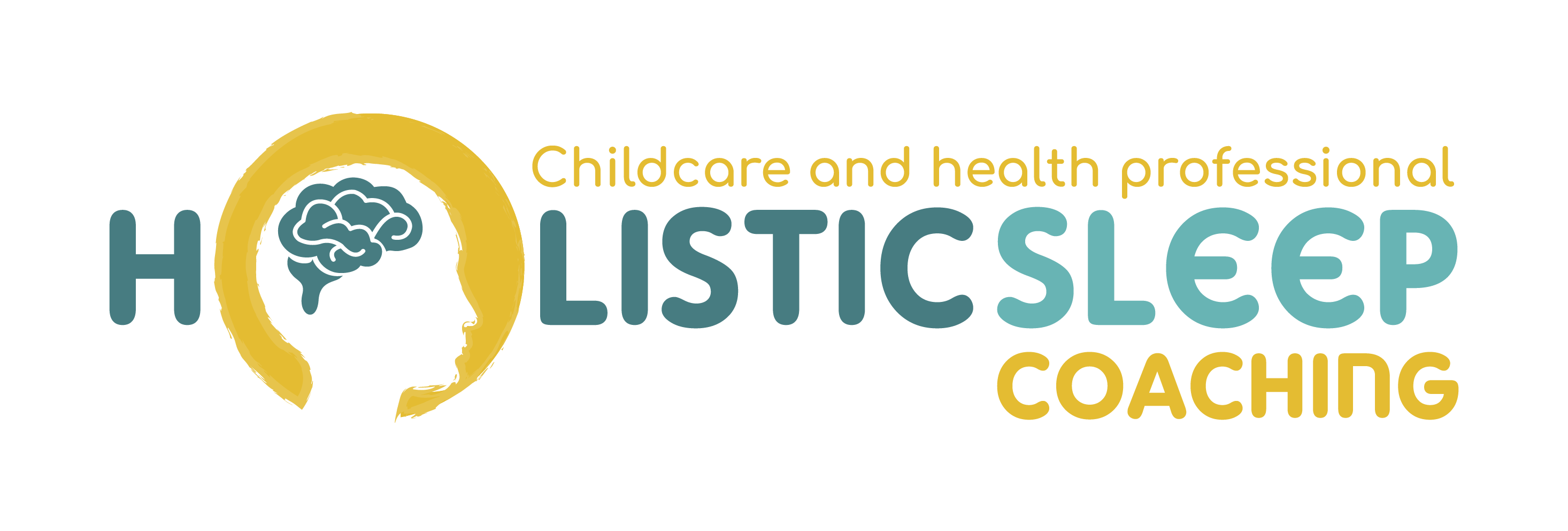Welcome sleep consultants to our blog post focusing on debunking sleep regression myths. Sleep regressions are a topic that often sparks curiosity and concern among parents. Today, we’re diving into the heart of this matter to uncover practical strategies that can ease the challenges associated with sleep disruptions in babies and young children.
Debunking Sleep Regression Myths
Sleep regressions consistently rank among the most searched baby sleep topics, reflecting the universal experiences and questions parents have in this area. In this blog post, I’ll be your guide as we navigate through the complexities of sleep regressions, offering insights and tips to help you better understand and support your clients.
But before we delve into strategies, let’s take a moment to debunk some common myths surrounding sleep regressions and gain a deeper understanding of what truly lies behind these fluctuations in sleep patterns.
For those who prefer visual content, you can watch the original video presentation below:
What do people mean by a ‘sleep regression’?
Before we dive into the heart of the matter, let’s clarify the term “sleep regression” for those who may not be familiar. This term refers to a scenario where an infant or child, who previously had a stable sleep pattern, begins experiencing disrupted sleep. This disruption may manifest as difficulty falling asleep, waking more frequently during the night, or changes in behaviour such as increased fussiness or restlessness. Now…. I’m diving straight in with the spoiler. I HATE the term sleep regression. I hate it for 3 main reasons.
Why ‘sleep regression’ is an inaccurate term
Firstly, in clinical pediatric terms, a regression signifies a loss of a previously acquired skill, which is often considered a major developmental red flag. For instance, if a child who was previously able to sit unsupported suddenly loses that ability, it warrants an urgent referral to pediatrics. However, sleep differs from learned skills; it is a biologically driven state that individuals naturally enter without the need for instruction. While certain conditions may facilitate sleep, equating sleep disruptions to a regression is inaccurate in this context.
Misunderstanding sleep changes can cause anxiety
Secondly, it causes parents significant anxiety. Many parents have heard about so-called sleep regressions or have read about them. However, each child has a unique sleep journey, and not all children experience sleep changes in the same manner.
Why ‘sleep regression’ is such a problematic term
Thirdly, the term tends to be associated with specific ages. You may have heard of the ‘4-month sleep regression,’ for instance, or other milestones such as the 8-month, 12-month, 15-month, and 18-month sleep regressions, among others. However, this concept leads people to anticipate sleep disruption only at these designated times. This simplistic view often arises because individuals focus solely on major developmental milestones common at particular ages. For example, it’s typical for babies to start rolling from back to front around 4 months. Nonetheless, development is more nuanced than this, with natural variability leading to sleep changes occurring at different times for different children. Moreover, developmental milestones aren’t the sole cause of sleep disruption. Thus, assuming that sleep challenges are solely linked to developmental changes can cause confusion, particularly when families aren’t immediately aware of why their child’s sleep patterns have shifted or why their nap or nighttime needs have intensified. So, it’s really important to focus on debunking sleep regression myths for the following reasons…

Development and dysregulation lead to sleep changes
But why does sleep seem to become erratic at certain times, seemingly out of the blue? The answer lies in the fact that whenever children are learning, developing, growing, or undergoing changes, there’s potential for them to become a little unsettled. This includes milestones such as learning to roll, sit, clap hands, stand, crawl, walk, talk, and so on. In fact, a recent study by DeMasi and colleagues (2023) found that learning to walk significantly disrupts sleep before, during, and after the child masters this skill. This disruption occurs because the same parts of their brain that are engaged in walking during the day are also active at night, leading to more active sleep, increased awakenings, and generally less sleep than before.
However, it’s not just about development. Layered on top of these developmental stages are various factors that crop up during infancy, such as illness, teething, new toys, new siblings, parental stress, moving house, starting childcare, visitors, and busy days, among others. When children become unsettled, they rely on their parents more. Young infants and children have limited abilities to self-regulate, meaning they struggle to become calm when stressed. While older children develop more sophisticated self-regulation strategies, such as problem-solving or seeking help, very young children have few options, such as avoiding scary images or sucking their thumbs.
Children need their adult caregivers to co-regulate them
Because of their limited self-regulation abilities, children need their adult caregivers to co-regulate them. A calm adult soothes the child’s dysregulated nervous system back to a state of calm, which is essential for sleep. The more dysregulated the child is, the more co-regulation they require. Therefore, significant changes in routine or environment will impact sleep, as the child requires more frequent and intense soothing from their caregivers.
Understanding regulation can be a game-changer when working with families. Returning to why children might be dysregulated, it’s crucial to remember that play is the work of childhood. Despite appearances, babies aren’t leading an easy life; they’re actively engaged in learning, playing, growing, and adapting to their environment. So when we talk about children being dysregulated, it’s not necessarily due to deep psychological trauma or significant stress at home, although these factors can also be true for some children. It simply means they have more on their minds, whether it’s learning, playing, growing, changing, or adjusting to a new environment.
“ When they are more dysregulated, they need more coregulation.”
Lyndsey Hookway
So why do some children seem to experience more profound disruption to their sleep? We all know babies who suddenly wake up one day with a new tooth, don’t we? And then there are those children who sail through learning to sit, roll, crawl, or walk with very little disruption. Why is that?
Some children are more sensitive
Well, these are the children who are naturally calmer. Perhaps they’re inherently more adaptable, or maybe they’re more resilient. They might be easier to console, or just generally more laid-back. This is a combination of genetics – nature, and environment – nurture. Some children are naturally more sensitive to the word go. Others are neurodivergent and find certain conditions more challenging. Some are uncomfortable, unwell, or have additional needs or health problems. In short, for a variety of reasons, some children find life trickier than others, even at a baseline. When you add in a developmental change or additional stressor, these little ones will have a harder time.
Debunking sleep regression myths is essential as a sleep consultant. So, if you remember nothing else from this discussion, it’s this: discard the idea of regressions or progressions. This mindset limits your thinking, and when you limit your thinking, you limit the solutions you can offer to families. And speaking of solutions, let me share four key tips that have worked for hundreds of my students and thousands of clients.
Tip # 1: Sleep Needs Change Over Time
The number one tip is to consider that sleep needs change over time. When faced with a period of sleep change or disruption, the first step is to assess how much sleep the child is getting compared to the average sleep needs for their age. It’s important to approach this with an open mind and consider low and high sleep need children, as well as those with average needs. Does the child actually need to drop a nap? Perhaps they require a power nap to bridge the gap between three naps and two. Or maybe their bedtime needs adjusting. Revisiting sleep opportunities, bedtime routines, and nap patterns is an excellent starting point.
Tip # 2: Understanding the Child’s World
The second tip is to ask the parent what is going on in their little one’s world. Don’t forget, parents are the world experts on their children. You might have a good overarching knowledge of sleep and how to manage it, but nobody knows this child like their parents. So, ask what’s happening. Encourage them to really think about any changes either in their child or in the home environment, context, or family unit. This aids understanding and gives you an idea of how to provide more specific support.
Tip # 3: Considering the Parent’s Disposition
The third tip is to consider the higher need parent too. It’s all very well saying that children need their parents to co-regulate them. But what if the parent themselves isn’t regulated? It’s very hard to calm someone down if you’re rattled. Think about the stressors in this parent’s life. Do they have outlets to blow off steam? Do they prioritize self-care? Is there a good level of co-parenting, or does someone need to step up? Do they need to access support for their mental health? Supporting the parent to become better regulated will ultimately help the child to become better regulated.
Tip # 4: Focus on Regulation, Not Sleep
And finally, number four is to focus on regulation, not sleep. When parents go into a sleep opportunity obsessed about sleep, this tends to increase their alerting drive and make them more stressed and anxious. Because sleep occurs in the resting state, we can’t fall asleep easily if we’re stressed. So don’t think about sleep. Think about getting calm. Empower your clients to focus on this aspect that they can control, rather than sleep – which to a large extent, is out of their control. If you get a calm baby, provided they’re also tired, they will sleep.
In conclusion, our exploration into the concept of “sleep regression” has revealed its limitations and shed light on the multifaceted nature of sleep disruptions in children. By understanding the underlying factors contributing to these challenges, we can better support families on their journey toward better sleep. Remember, it’s not just about addressing sleep patterns but also about fostering regulation and calmness in both parents and children.
We hope you enjoyed debunking sleep regression myths with us today.
References
